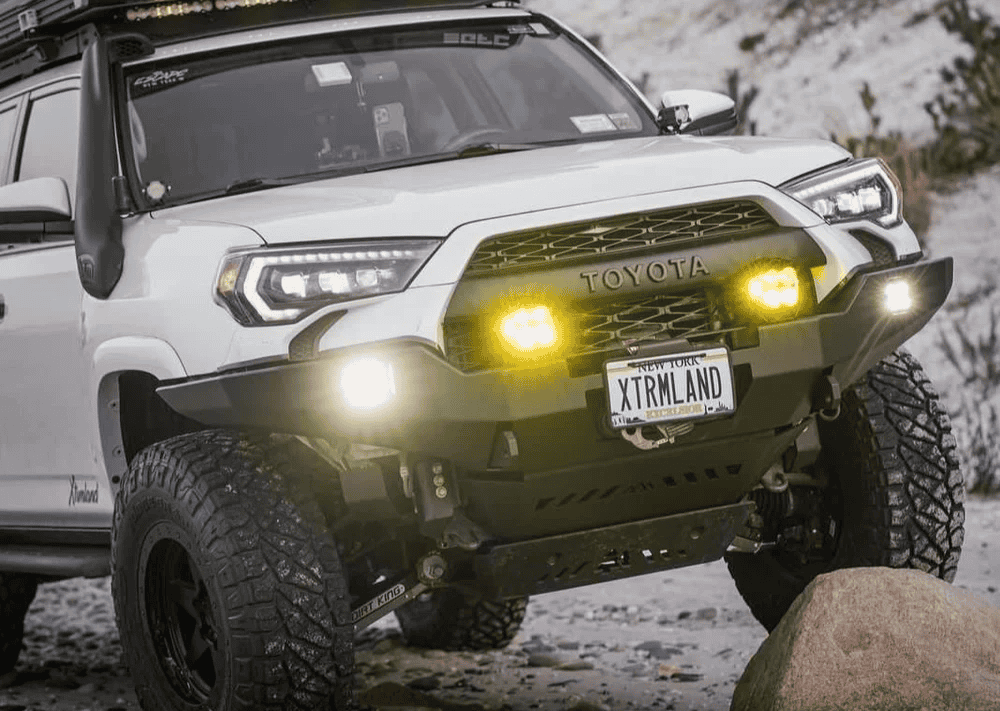Overland Vehicles

A lithium battery for overland setup shines because of high usable capacity, fast charging, and light weight. Lithium iron phosphate chemistry is popular for vehicle based travel thanks to stable thermal behavior and long cycle life. Usable capacity often pushes near full nameplate without stressing the cells, which keeps lights, fridges, and fans running longer between charges.
The battery management system is the brain and bodyguard. It balances cells, enforces high and low voltage limits, and controls charge and discharge in tough environments. Look for protections against over current, short circuits, and temperature extremes. A strong BMS paired with proper system fusing helps the pack survive washboard roads and surprise load spikes.
Voltage choice guides the rest of the build. Twelve volt remains common for legacy accessories, while twenty four volt reduces current for larger inverters and long cable runs. Keep inverter size realistic and choose pure sine for sensitive devices. Mount the pack low and secure, away from engine bay heat and splash zones.
Lithium iron phosphate offers predictable voltage curves and thousands of cycles, making it well suited to repeated charge and discharge in travel. Nickel rich blends can store more energy per pound but may demand tighter thermal management. Whichever chemistry you choose, insist on a BMS with clear specs, documented limits, and a way to read state of charge.
Start with a load audit. Add up daily watt hours for each device, then add margin for weather, elevation induced fridge run time, and trip variability. Autonomy is how many days you want before any charging. Multiply daily use by autonomy to find usable energy, then size battery capacity so you do not regularly drain the pack to empty.
Charging is the other half of the equation. Alternator charging through a DC to DC unit ensures correct voltage and protects the vehicle. Solar with MPPT shines during long stays, and shore charging is perfect for a quick top off before departure. A balanced plan pulls a little from each source to keep the battery in a healthy charge window.
Wire, fusing, and distribution keep the system safe. Size cables for continuous current plus surge, and place fuses or breakers as close to the battery positive as practical. Use busbars to keep connections tidy and serviceable. A shunt based monitor or smart BMS app gives accurate state of charge so you can make decisions with confidence.
Common loads include a compressor fridge, lights, a water pump, fans, and device charging. Occasional big draws include an induction cooktop or air compressor. Decide how many hours per day each runs, convert to energy, and apply a weather buffer. The result guides both battery capacity and solar array size.
Mount the battery in a protected, ventilated space, even though lithium does not require venting like legacy chemistries. Avoid engine bay heat and direct spray. Use vibration isolating mounts and keep cable runs short. Label everything for service in the field and carry spare fuses.
Cold weather charging deserves care. Many lithium packs cannot accept charge below freezing. Solutions include self heating batteries, pack heaters on a thermostat, or a charge lockout tied to temperature sensors. In hot climates, shade and airflow help, and keeping the pack out of radiant heat zones preserves cycle life.
Plan for redundancy where it matters. Separate critical and noncritical loads with distinct distribution and breakers. A low voltage disconnect saves the vehicle from no start events. Keep a clear service loop near the fuse block and busbars to make roadside troubleshooting faster.
A shunt monitor reports real state of charge and daily usage trends. Many smart batteries expose Bluetooth data for quick checks. Periodically inspect torque on lugs, look for chafe points, and test breakers. Store the pack around half charged during long downtime and keep firmware updated where applicable.
A well built overland power system turns rough miles into comfortable camp time. Matching battery capacity, charging sources, wire sizes, and protection takes planning. If you want a system that feels invisible in use, professional integration saves guesswork and time on the trail.
OZK Customs designs and installs complete overland electrical packages that tie alternator, solar, shore power, and power distribution into a single, dependable system. See how our trail tested builds come together on the overland rigs page. If you are exploring options for a tailored electrical package, our custom overland upfit process focuses on your loads, trip length, and climate. Curious about our approach and client experience We share the story and values behind each build on why choose OZK Customs.
Tell us how you travel, what you power, and where you plan to roam. We will map your energy budget, right size a lithium battery for overland setup, and commission a system built for real miles and real weather.
Ready for a dependable off grid power system that just works? Tell us about your travel style, key loads, and trip lengths. OZK Customs will design and install a matched overland electrical package that balances capacity, charging, and safety—so your fridge stays cold and your tools stay charged wherever you wander.
ADDRESS:
6159 E Huntsville Rd, Fayetteville, AR 72701
PHONE:
(479) 326-9200
EMAIL:
info@ozkvans.com